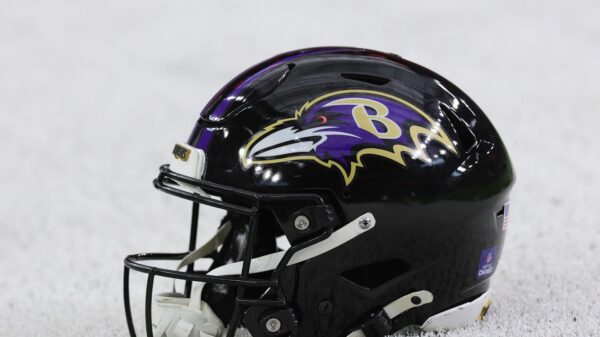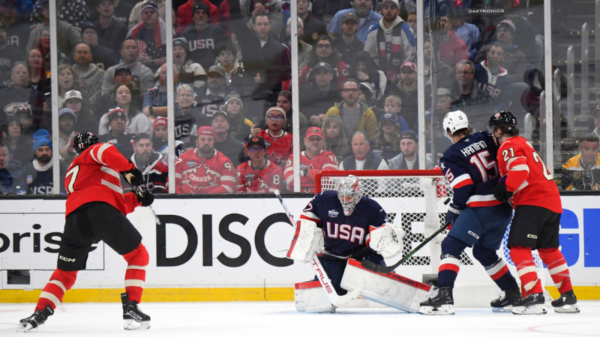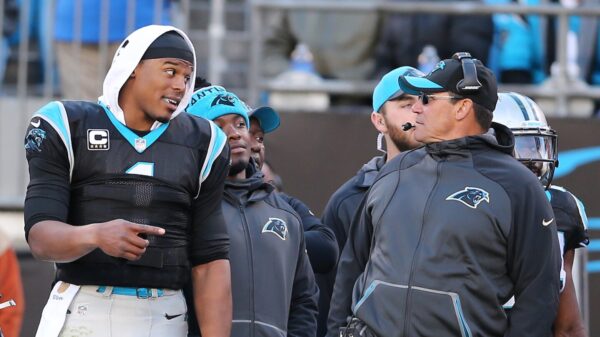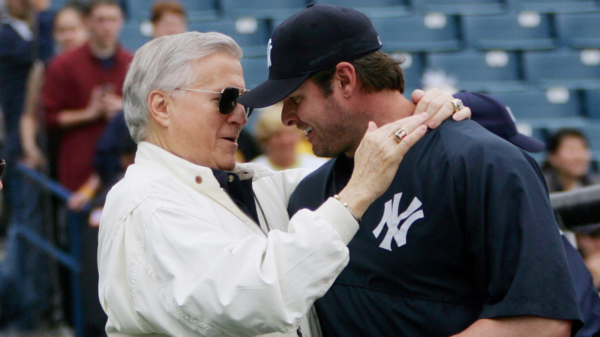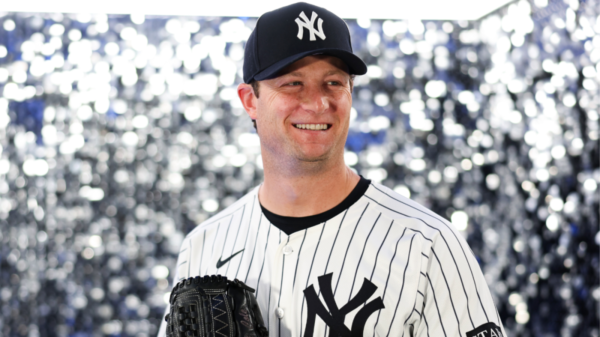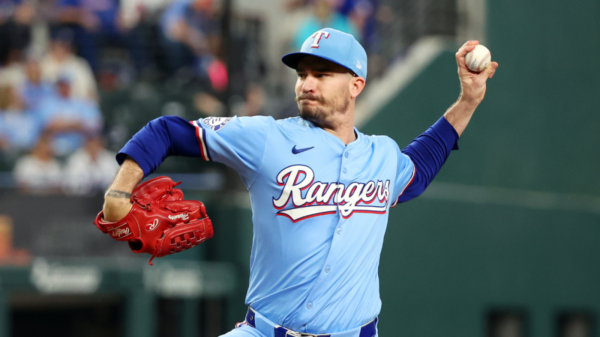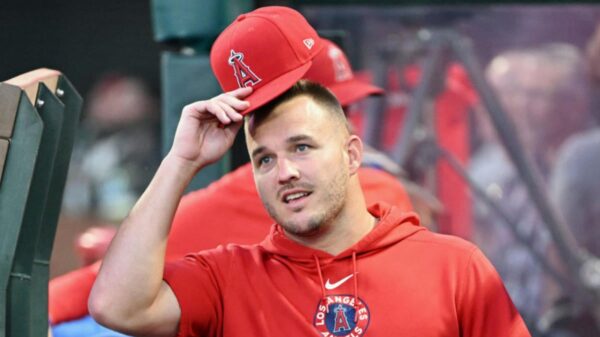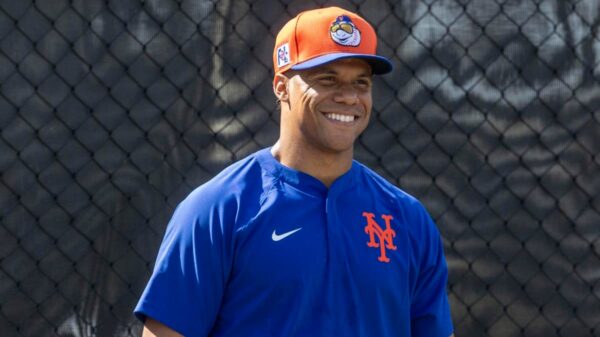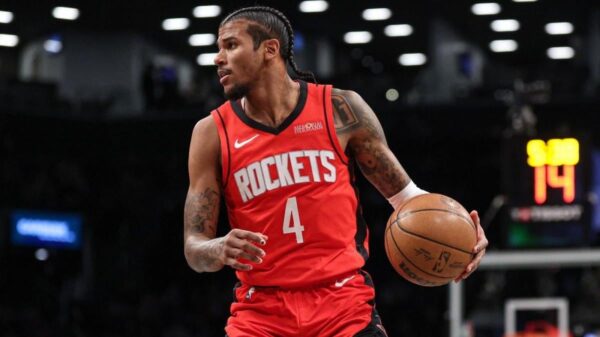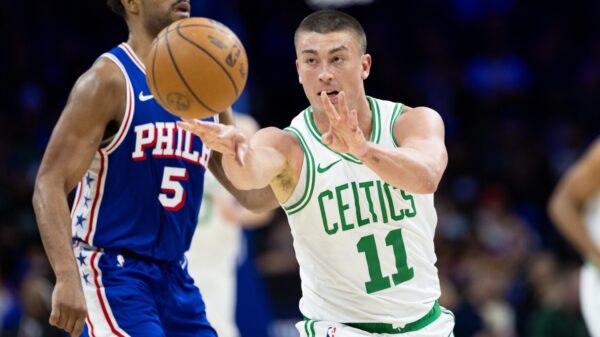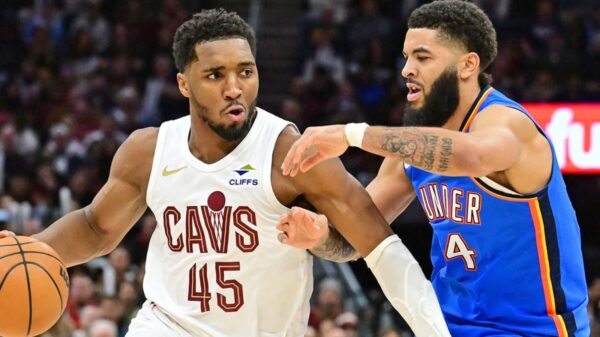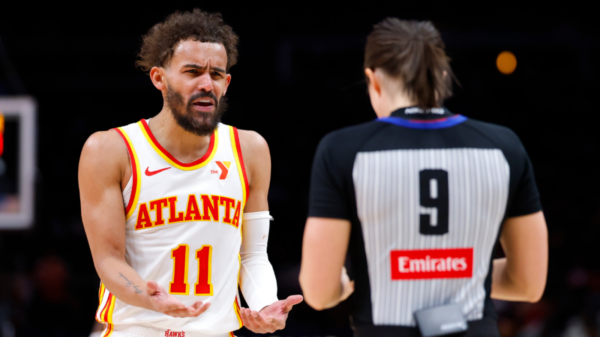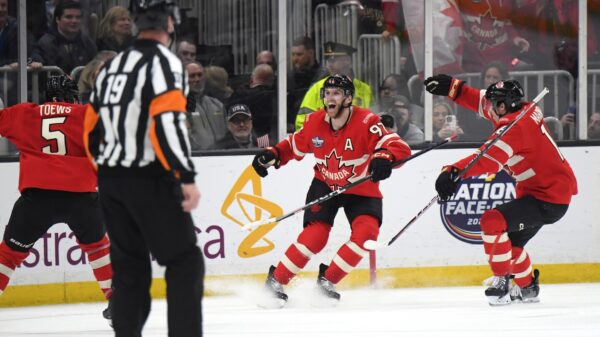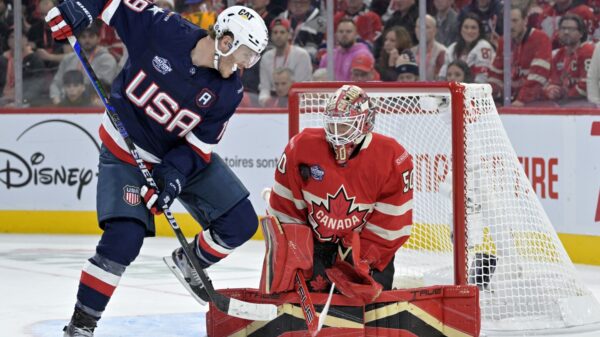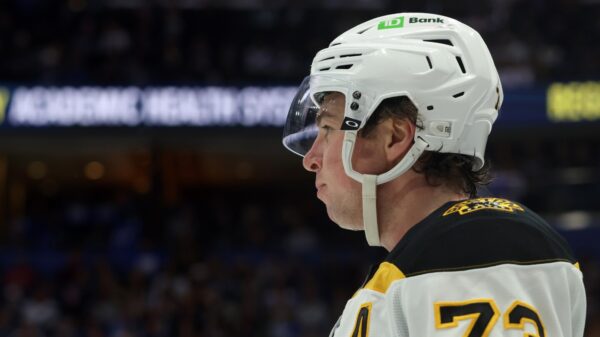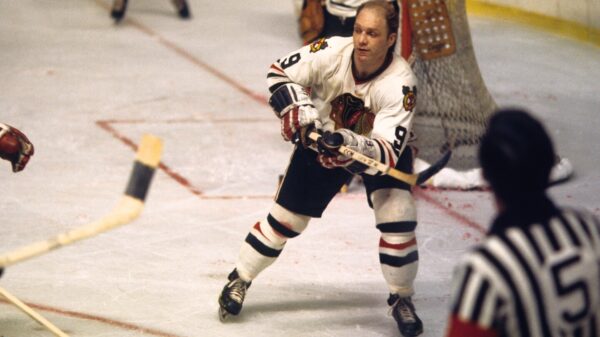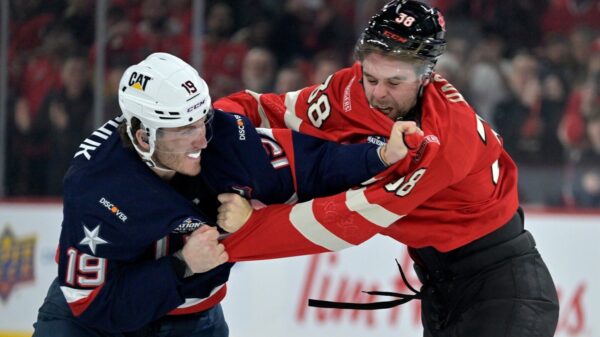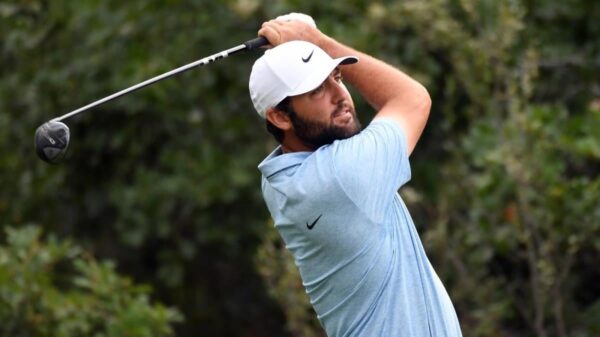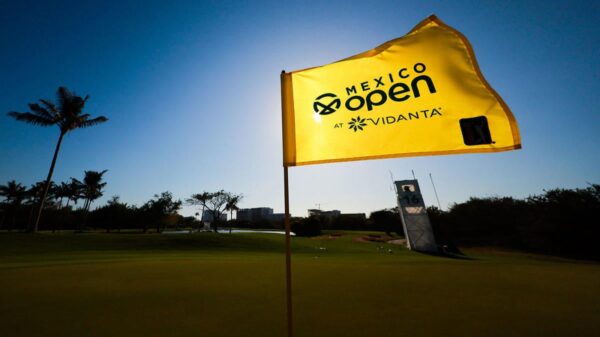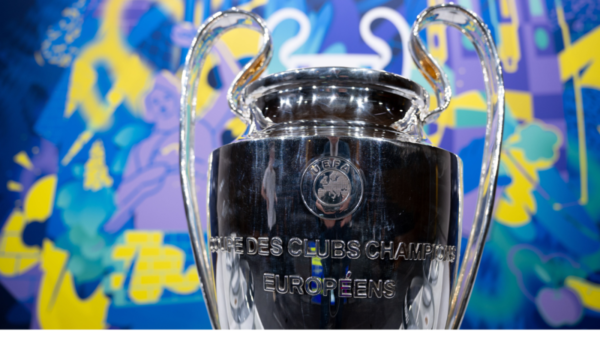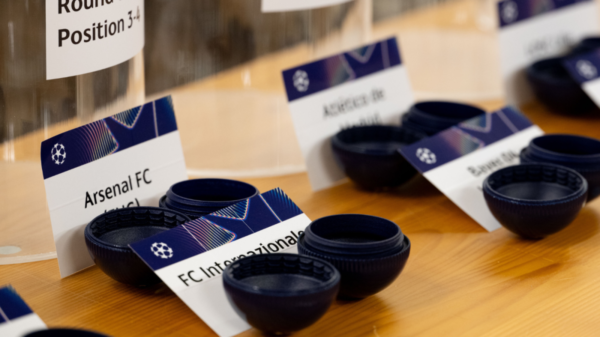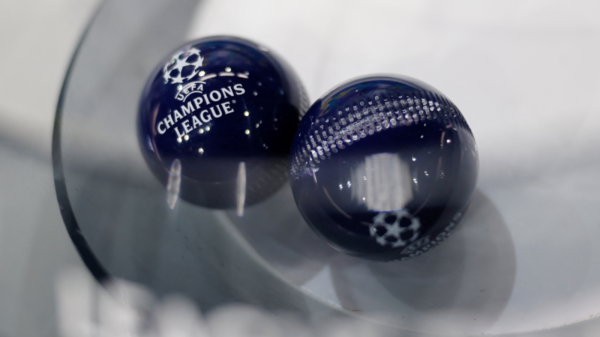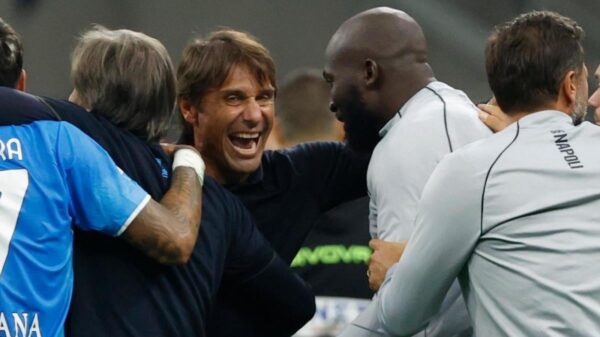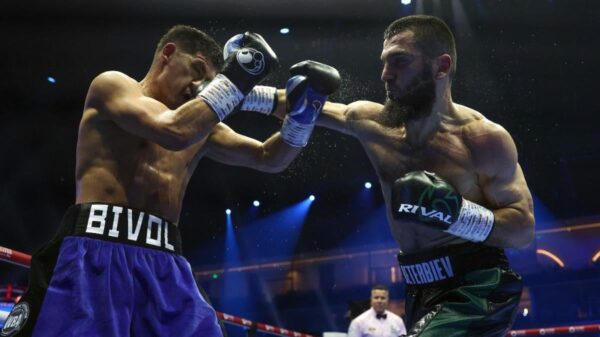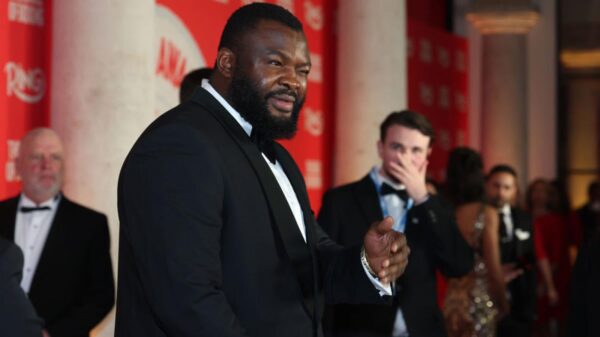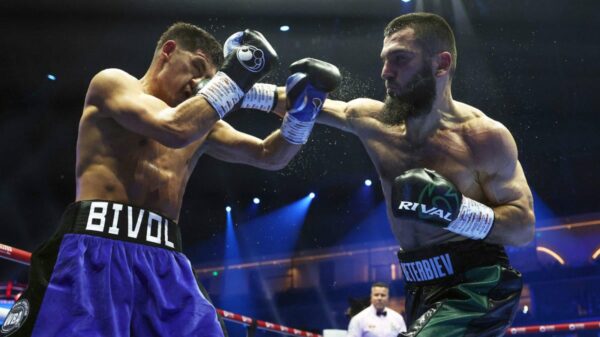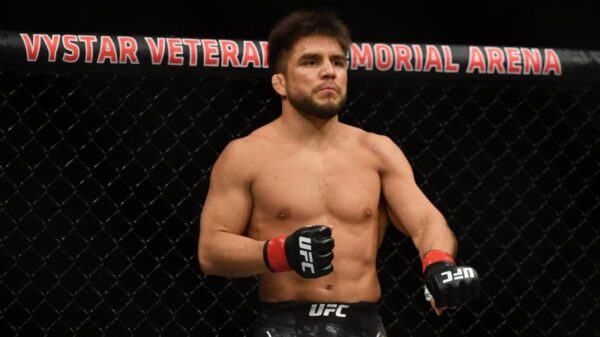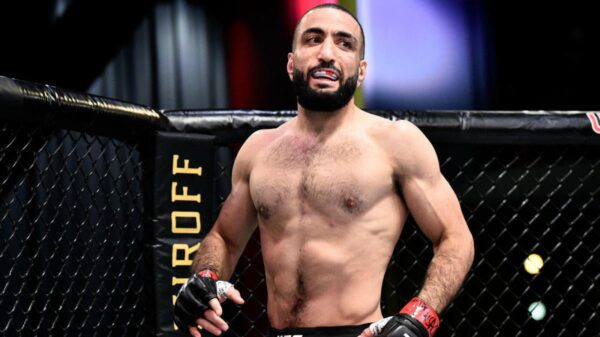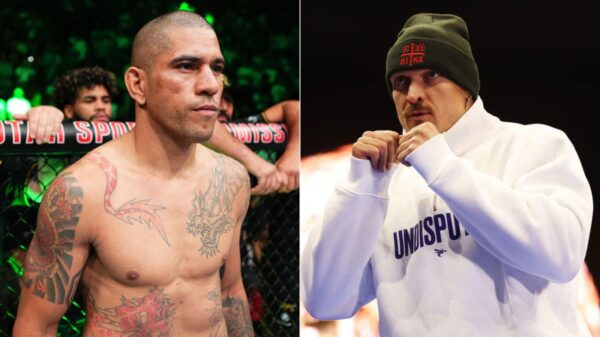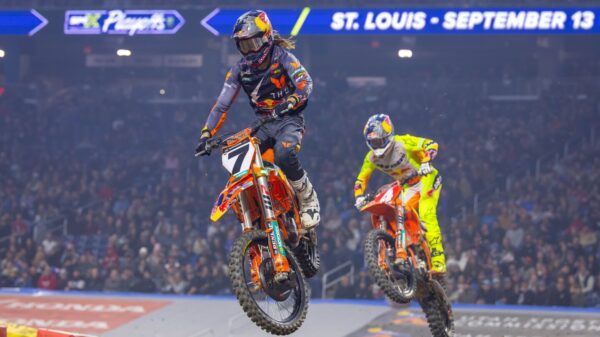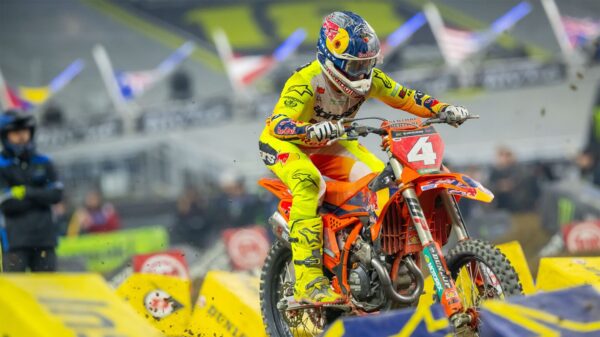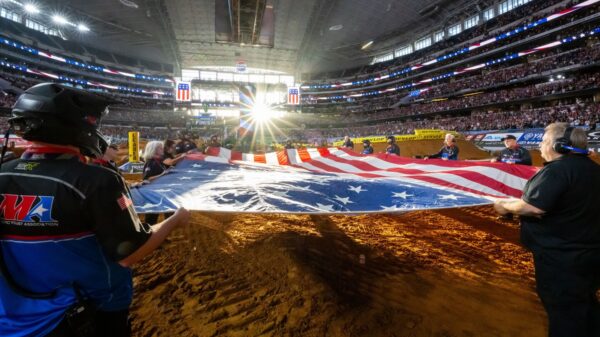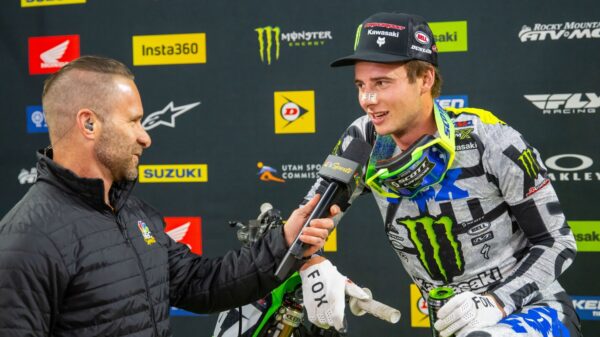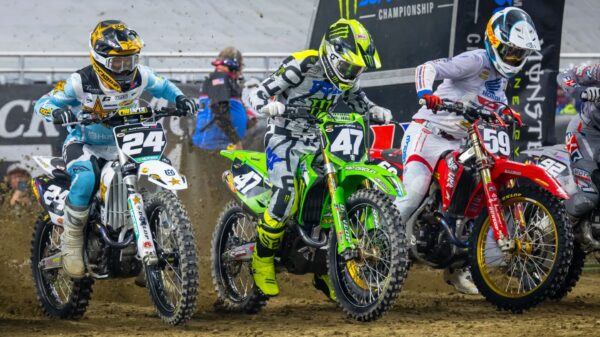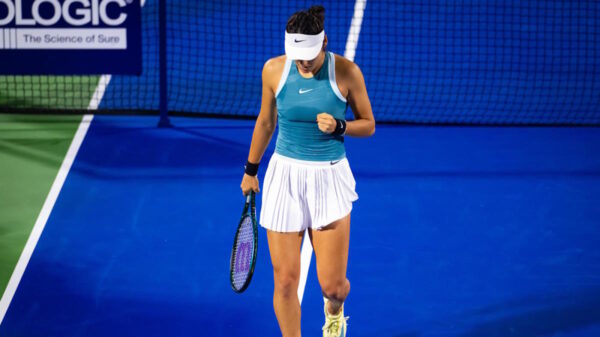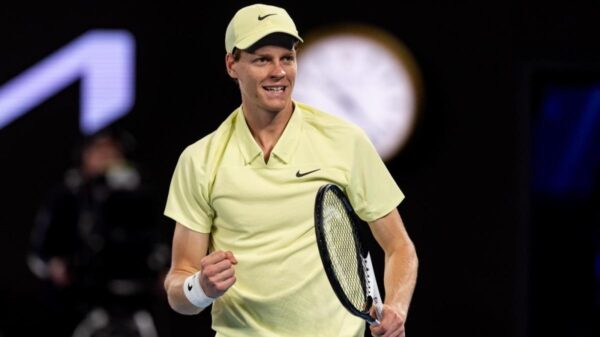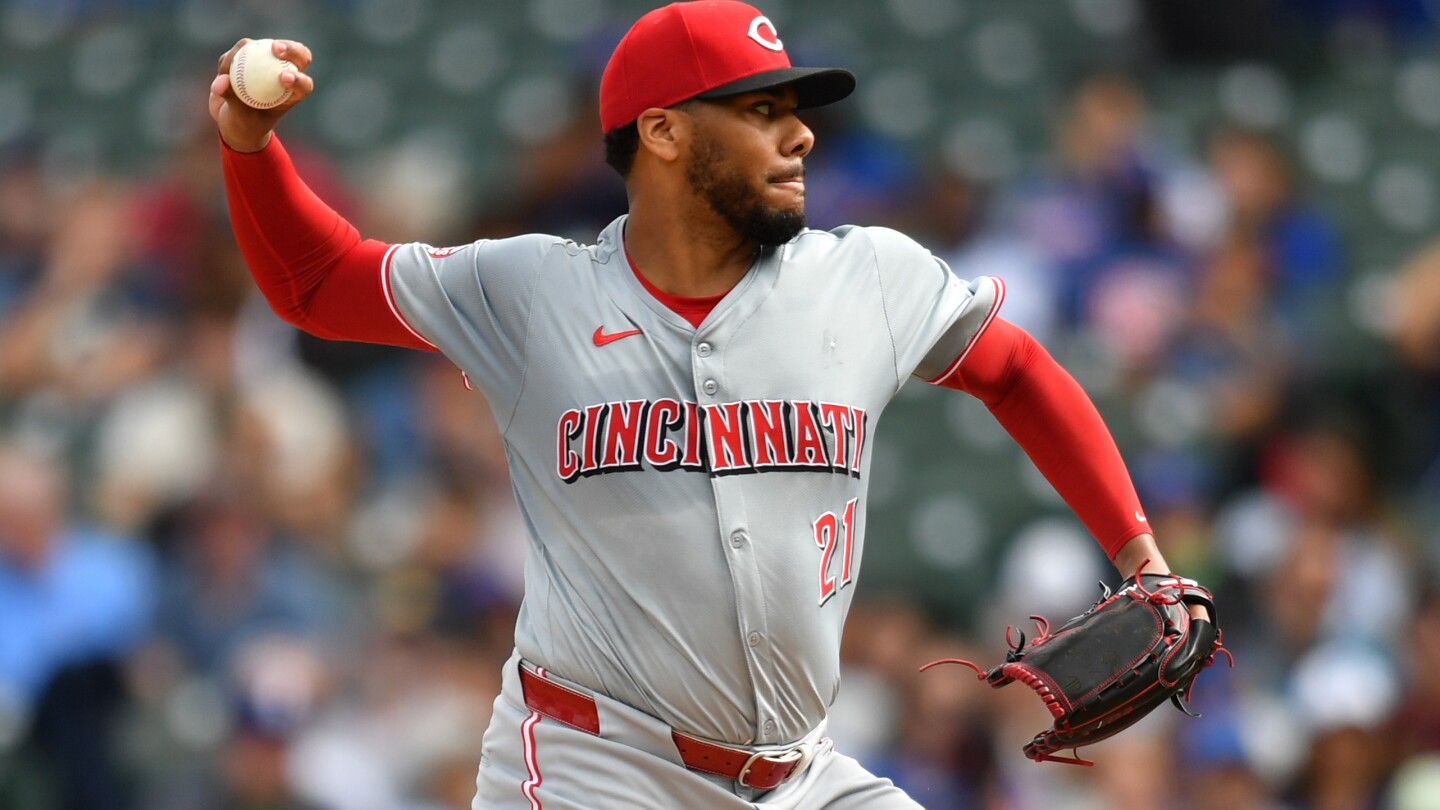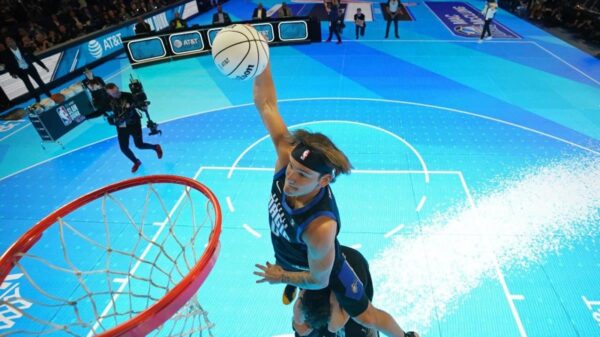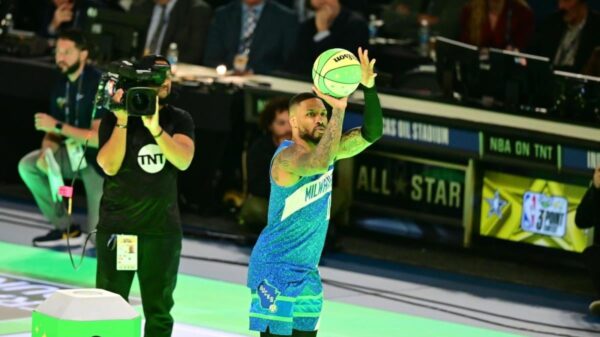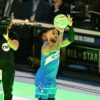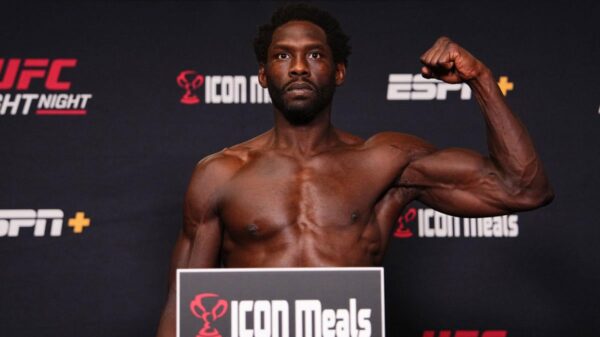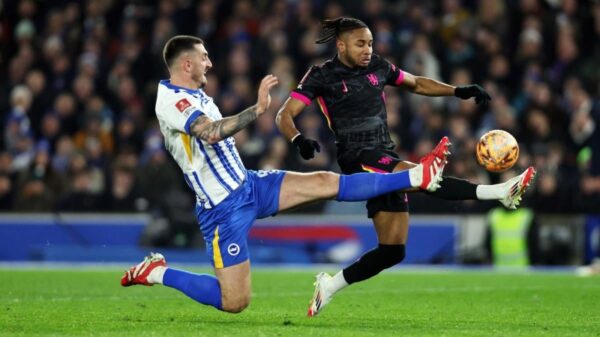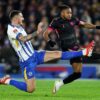We love sleepers and draft values so much in fantasy sports that they comprise the vast majority of our content. I get it, hitting on a late-round pick who becomes a stud can drastically change the trajectory of your season. I’m also guilty, having already published pieces on post-hype hitters, post-hype pitchers, and my favorite late-round starting pitchers. However, today we need to get negative and think about the players most likely to bust.
Having a successful fantasy season is impacted just as much by avoiding the biggest landmine as it is by finding the right sleeper. If you’re using an early-round pick on a player, you are banking on strong statistical production and on them being present in your lineup for the vast majority of the season. That’s why taking pitchers in the early rounds is so risky to begin with; however, if you do take a starting pitcher in the early rounds and wind up having to drop them in the middle of the season, it can be a major anchor weighing down the future success of your team.
Yet, it seemingly happens every season, so we’re going to try and make sure it doesn’t happen to us this year.
For this article, we’re going to call a “bust” a pitcher who you wind up dropping from your roster in most formats. A pitcher like Kevin Gausman disappointed you in 2024, especially given his draft cost, but he was not somebody you dropped. Meanwhile, Bobby Miller would have likely been cut from your teams even if he wasn’t hurt, and back in 2023, you were easily dropping Alek Manoah despite both of those guys being drafted inside the top 25 starting pitchers for that season.
So how can we avoid stepping on a similar landmine in 2025?
What Makes a Starting Pitcher Bust Likely?
If we use 2023 Alek Manoah and 2024 Bobby Miller as guides, what can we look for that will help us find the signs of a potential high-end starting pitcher bust? I looked back at their player profiles on Pitcher List in the year preceding their fall and came up with a few signs I think we need to look for.
1) Average chase rates with two strikes. Alek Manoah had a below-average two-strike chase rate in 2022 and Bobby Miller was exactly league average in 2023. Not getting chases off the plate with two strikes will limit strikeout upside and means that a pitcher needs to be really precise with their command which can create a difficult tightrope to walk.
2) Average rate for balls in play. This continues a little off of number one, but if you’re not getting chases off the plate or posting high strikeout rates then you’re likely allowing a fair amount of balls in play (BIP%). If hitters are consistently putting balls in play then the pitcher is depending a lot on their defense and that adds another variable that we need to control for.
3) Fluky HR/FB rates. The quickest way to turn a good pitching performance into a bad one is to allow a home run. Some pitchers have a skill at limiting home runs based on their pitch mix or where they pitch in the zone, but sometimes pitchers just get lucky. In 2022, Manoah had a 7.7% HR/FB rate. The league average is 14% and Manoah has a career 11% mark so that 7.7% should have set off alarm bells that home run regression was coming.
4) Advantageous Hit Luck Scores. Pitcher List has a cool stat called Hit Luck which asks “Based on the quality and location of each pitch, how many hits should the pitcher have allowed?” Then it looks at whether those batted balls turned into hits and gives a Hit Luck score. In 2022, Manoah had a -10 Hit Luck score, which means he should have allowed 10 more hits than he did. Hits lead to baserunners and baserunners can lead to runs, which is another way to suggest ratio regression.
5) Average quality pitch rates. This is another Pitcher List stat, which just measures the percentage of pitchers a pitcher throws that receive a good PLV grade. The more often a pitcher has pitches with good movement and good location, the higher their QP% is. Obviously, a lower QP% means that the actual pitches themselves are not grading out well and so their success may be flukey.
So after going through that criteria, who stands out as potential starting pitcher busts in 2025?
Eric Samulski ranks his top 150 starting pitchers for the 2025 fantasy baseball season.
Which Starting Pitcher Will Bust in 2025?
First, let’s look at who the top 25 starting pitchers off the board are. I took this data from the last 20 NFBC Rotowire Online Championships, which are 12-team formats. I also removed Roki Sasaki, who is going as SP22, because we have no MLB data to use for this exercise so it kind of defeats the purpose.
| SP Rank | Player | Team | ADP |
| 1 | Skenes, Paul | PIT | 10.75 |
| 2 | Skubal, Tarik | DET | 15.15 |
| 3 | Wheeler, Zack | PHI | 21.35 |
| 4 | Gilbert, Logan | SEA | 26.3 |
| 5 | Crochet, Garrett | BOS | 27.95 |
| 6 | Sale, Chris | ATL | 35.4 |
| 7 | Burnes, Corbin | ARI | 37.4 |
| 8 | deGrom, Jacob | TEX | 40.05 |
| 9 | Ragans, Cole | KC | 41.85 |
| 10 | Snell, Blake | LAD | 43.2 |
| 11 | Kirby, George | SEA | 46.4 |
| 12 | Cease, Dylan | SD | 48.7 |
| 13 | Yamamoto, Yoshinobu | LAD | 58.55 |
| 14 | King, Michael | SD | 62.95 |
| 15 | Valdez, Framber | HOU | 64.75 |
| 16 | Cole, Gerrit | NYY | 65.7 |
| 17 | Lopez, Pablo | MIN | 71.8 |
| 18 | Miller, Bryce | SEA | 76.65 |
| 19 | Imanaga, Shota | CHC | 78.3 |
| 20 | Ober, Bailey | MIN | 83 |
| 21 | Schwellenbach, Spencer | ATL | 83.65 |
| 22 | Nola, Aaron | PHI | 92 |
| 23 | Glasnow, Tyler | LAD | 92.55 |
| 24 | Greene, Hunter | CIN | 93.7 |
| 25 | Castillo, Luis | SEA | 95.2 |
After going through our criteria, five pitchers came up are potential concerns for bust status. We’ll go over the case for each one here.
Bryce Miller – Seattle Mariners
Bryce Miller ticked the boxes in three of the five criteria we’re looking out for. His 23.4% two-strike chase rate was below the 25.3% league average, he allowed a league-average amount of balls in play (BIP%), and his HR/FB ratio was over 3% below the league average. Should those issues be enough to worry us?
I do think it’s enough to give us pause at cost, which is why I have Miller ranked 36th in my latest starting pitcher rankings. I think there are some valid concerns around his pitch mix as we head into spring training. He has an elite four-seam fastball but no secondary pitch that is consistently a plus-pitch. They can flash plus at times, but it’s a roll of the dice to see which pitch shows up in which start. That’s part of the reason that he allows as many balls in play as he does, and likely why his two-strike chase rate is lower than we’d like to see.
However, last year was just his second season as an MLB starter and he made clear improvement in most of those areas. His HR/FB rate fell to 10.8% last year, which may regress a bit back to the norm, but he was above-average in home run suppression in 2023 as well, and his approach makes that seem likely to continue. While his BIP% was around league average in 2024, it was an improvement from his poor mark in 2023. All of those are signs of a young pitcher who is improving as he continues to tweak his pitch mix.
The biggest concern for Miller is the two-strike chase rate. His four-seam fastball and curveball are the only pitches that posted an above-average chase rate in two-strike counts, and he barely throws the curveball. The splitter had a 29% mark against lefties where the league average was 31.5%. The sweeper was at 23% to righties where 28% is league average, and the harder slider had just a 16.7% mark to righties where 27% is league average. That’s not where you want to be, and even though Bryce Miller seems to be adding a cutter this year, which I like, that’s not likely to help him with his two-strike chase rate, which means his four-seam fastball continues to be the only pitch he gets consistently swings on out of the zone in two-strike counts.
He could certainly improve one of his other pitches, but when you pair that poor two-strike chase rate with concerning home and road splits that saw him pitch to a 4.07 ERA, 1.10 WHIP, and 18% strikeout rate on the road, I’m not sure we have a top-25 pitcher. However, I also don’t see a pitcher who is going to completely bust.
Spencer Schwellenbach – Atlanta Braves
Schwellenbach may be the most surprising name on this list and mostly because if you haven’t been reading fantasy baseball content during football season, you may be shocked to find out that Schwellenbach is being drafted as a borderline top-20 starting pitcher. Much like Miller, Schwellenbach ticked three of the boxes with a 43rd-percentile ball-in-play rate, a HR/FB rate that was 2% below the league average, and a -10 hit luck score. He also experienced a massive jump in his career-high innings, which Manoah did in 2022 as well, and Schwellenbach has the smallest track record of anybody in the top 25. So does that make him a bust?
Much like Bryce Miller, Schwellenbach is a young pitcher who got called up straight from Double-A and got better as he got comfortable at the MLB level. After struggling through his first six MLB starts, Schwellenbach pitched to a 2.54 ERA, 0.96 WHIP, and 26.2% strikeout rate in his final 15 starts. That’s pretty impressive. Over that span, his two-strike chase rate was 27% so we continue to see that those swings and misses won’t be an issue for him. His 11.4% HR/FB rate remained well below the league average which makes some sense given his pitch mix features heavy cutter, slider, and splitter usage; however, Truist Park is 12th in Statcast’s Park Factors for home runs, which is not great news for pitchers there and could lead to regression in that metric for Schwellenbach.
Over that stretch mentioned above, Schwellenbach also had an 18.4% ball-in-play rate, which is well above league average, and a -11 Hit Luck score, which suggests more of those balls in play should become hits on average. When you combine that with the fact that Schwellenbach had never thrown more than 65 innings in a season and jumped up to 168.2 last year, you have a few more concerns that he could be a 2023 version of Alek Manoah.
The Braves also have no reason to stick with Schwellenbach if he struggles early on. Grant Holmes and Ian Anderson will start the year in the rotation with Spencer Strider hurt, but both Holmes and Anderson are out of minor league options, so there’s a world where Schwellenbach struggles to start the year, Strider returns, and the Braves decide to send Schwellenbach to Triple-A rather than expose Holmes or Anderson to waivers. The Braves also have potential high-end pitching prospects in Hurston Waldrep and AJ Smith-Shawver, who were both viewed as better prospects than Schwellenbach last year, so the 24-year-old’s spot in the rotation is not as secure as some of the other pitchers on this list if he doesn’t come out of the gates strong.
Your one-stop-shop for Rotoworld’s preseason fantasy baseball content.
Luis Castillo – Seattle Mariners
Luis Castillo didn’t actually check the boxes in any criteria, but he came close in three of them and has been declining over the last two seasons, so it’s worth looking into his possibility to bust. Last year, Castillo’s two-strike chase rate dropped to 25.5%, which is essentially the league average, and his balls-in-play rate went up to 17.2%, which is just ahead of the league average but still his worst mark ever. He also had a 48.1% quality pitch rate, which was 54th percentile and he has been below the league average for his career.
It would feel unfair to choose Castillo as the most likely pitcher to bust because he is one of the few pitchers in the top 25 who cleared all five criteria. Paul Skenes even checked two of the boxes, while Logan Glbert, Blake Snell, Dylan Cease, and Gerrit Cole all checked one. Still, there is cause for concern that Castillo is not the same pitcher we’re used to seeing.
His Ideal Contact Rate (ICR) jumped 4% in 2024 and is now firmly below the league average, his swinging strike rate fell to a career-low, and his two-strike chase rate was the lowest of his career. All of that speaks to a declining strikeout rate; however, Castillo’s arsenal graded out better in terms of PLV grades than it has since 2020, and his quality pitch rating was the highest it’s ever been. He got into more two-strike counts than he ever has and got ahead of hitters more often than he ever has as well.
I think what we’re seeing is a pitcher who is no longer elite and should not be a fantasy ace, but should continue to post a 3.70 ERA with a sub-1.20 WHIP in 170+ innings for a good team. That’s not exciting, but that’s also not a pitcher you’re ever thinking of dropping from your roster, so Castillo is highly unlikely to be this year’s bust.
Framber Valdez – Houston Astros
Framber Valdez also ticked off three of the boxes for our criteria and was super close to hitting a fourth out of five, which is a bit concerning. The left-hander allows a lot of balls in play, had a HR/FB rate that was worse than the league average but better than anything he has posted since 2020, and had an 83rd-percentile hit luck score. He also had just a 48.3% quality pitch rating, and the league average is 47.4%, which means Framber posted just a 59th percentile QP% and is actually below the league average for his career.
I have always been a little lower on Framber than the consensus, so his appearance on this list doesn’t surprise me. I think he’s a pitcher whose primary fastball – a sinker – gives up a decent amount of hard contact and who has lost his slider since it was more of a cutter for him back in 2022. His career ball-in-play rate is over 18%, which is worse than the league average, and his strong quality pitch percentage in 2024 is mostly because of his instance second-half stretch. In his first 15 starts, Framber posted a 3.84 ERA, 1.30 WHIP, and a 19% strikeout rate. That was brutal to roster. In his final 13 starts, he seemed to find the command of his curveball and posted a 1.91 ERA, 0.89 WHIP, and 30% strikeout. It saved his season, but we also have seen Framber pitch long enough in the majors that we know he’s not replicating that level over an entire year. So who is he really?
At the end of the day, Framber is a mediocre fastball pitcher with a plus changeup who needs his curveball to succeed. Since that pitch seems to leave him at times most seasons, I think we’ll continue to ride the rollercoaster with Framber again in 2025; however, he has always missed a solid amount of bats in two-strike counts and has never really had a bad MLB season, so it’s hard to see him truly being a bust. I just have him ranked SP31, so I remain lower on him than the consensus, but he won’t be my selection here.
Hunter Greene – Cincinnati Reds
Much like Framber, Hunter Greene checked the boxes in three criteria and came close in a fourth. Despite seemingly having plus raw stuff, Greene posted a 23.3% two-stike chase rate and has been below average in that metric for his entire career. He also had a -24 Hit Luck score last season, which is absurdly high; one of the highest among all starting pitchers. He also had a 7.2% HR/FB rate which is not only well below the league average but is significantly below his 13% career mark and speaks to major regression coming in 2025. Add to that a 48.1% quality pitch rating that was just above the 47.4% league average, and you have a few clear warning signs for Greene entering 2025.
I know people think Greene used his new splitter to fuel his breakout season in 2024, but that wasn’t the case. Yes, Greene needed a third pitch, so in that respect, the splitter was good; however, it was graded as a below-average pitch by PLV and the only benefit of it seems to be that it added an extra wrinkle to his arsenal. The splitter didn’t give up hard contact, but it had just a 33% zone rate and a 53% strike rate to lefties, both of which were below average. As was its 22.7% CSW. It was also a poor two-strike pitch to lefties, so it wasn’t a pitch for strikes or swinging strikes and didn’t help improve Greene’s below-average two-strike chase rate at all.
The pitch could certainly improve in Greene’s second season throwing it, but his success last year was because of his four-seamer. He added extension to the pitch, which is rare, improved his zone rate, and gave up significantly less hard contact on it. However, he also had a -15 Hit Luck on his fastball, which tells us that 15 batted balls off the fastball that ended in outs should have been hits based on pitch quality and location. All of this means that Greene wasn’t a much different pitcher in 2024 and also got a bit lucky with his batted ball results so that 2.75 ERA is likely to climb again in 2025. I wouldn’t be surprised if he registered a 3.75 ERA or something similar given he pitches in the worst home park for pitchers and his HR/FB% will most assuredly go back up closer to his career norms. Yet, even though he doesn’t miss bats in two-strikes counts like he should, he seems to have the floor of a 27% strikeout rate pitcher, which is pretty darn good.
However, he did make improvements to his locations in 2024 which helped improve the contact quality allowed, and he has never allowed too many balls in play. He also has an above-average fastball and slider, so there is always a solid foundation for at least a decent MLB starting pitcher. His biggest risk factor may simply be that he averages nearly 98 mph on his four-seam fastball and pitchers who throw that close to their max are seemingly far more likely to end up having to undergo surgery. All of those concerns have me not believing in the breakout season we saw from Greene last season, but do they make him the biggest bust risk of this group?
Thirteen pitchers going after pick 300 in drafts who could provide major value
Final Verdict
After going through this whole exercise, my choice for the top 25 starting pitcher most likely to bust in 2025 is narrowed down to either Spencer Schwellenbach or Hunter Greene. Hunter Greene feels like a good choice since I think he’s due for major home run regression, pitches in a terrible ballpark, and feels like he possesses a high injury risk. However, we have never seen Greene be a bad MLB pitcher, so I can’t see dropping him unless he gets hurt, and this isn’t about injuries. That means I’m going to choose Spencer Schwellenbach, who seems to perfectly fit the Alek Manoah and Bobby Miller narrative of a major fall-off in his second full MLB season. This doesn’t mean I’m avoiding Schwellenbach, but I have him ranked SP34 right around guys like Bryan Woo and Jared Jones, who also have similar implosion risks, so I will not be taking Schwellenbach in the top 25 and it wouldn’t surprise me if we get to a point in the season where you feel like you have to drop him.
Read the full article here



